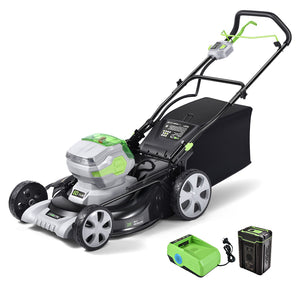Neovolta 60V Cordless Self-Propelled Lawn Mower Kit
Was$869.00Now $695.20Unit price /Unavailable
A DIY home improvement project is a massive undertaking, one that requires a significant amount of time & effort and some capital investment. For starters, you will need access to the right power tools to get the job done. The market is full of useful items, but the average homeowner doesn’t possess the requisite knowledge needed to differentiate the more useful items from the less useful ones.
A DIY home improvement project is a massive undertaking, one that requires a significant amount of time & effort and some capital investment. For starters, you will need access to the right power tools to get the job done. The market is full of useful items, but the average homeowner doesn’t possess the requisite knowledge needed to differentiate the more useful items from the less useful ones.
So for those of you who want to learn the basics, this article points out five things you should know before buying power tools for a DIY project.
1) Cord Versus Cordless – Between a Rock and a Hard Place For many users, trading raw power for cordless power tools is not a justifiable tradeoff, particularly when the prices of some tools are sky high. Both types of power tools have their own benefits. Corded models have sheer raw power because they borrow energy directly from the grid.
These models are limited only by the length of their cords, but a good workaround is to find extension cables and call it a day. But then, you will have a jumbled mess of wires inching against each other for more space. Cordless power tools are easy to carry around and are configured to allow users to work on their projects from any angle or position of their choosing.
2) All the Bells and Whistles Every product will have a bunch of extra features thrown in for marketing purposes. While these features are nice to have, most people only care about the bits that are actually important. Those fancy LED panels aren’t telling you what you already don’t know. What you should be looking for, instead, are features that may be needed for specific projects. These include power levels, torque settings, drill bits to work with project materials, and an ergonomic grip.
3) Safety Is the Most Important Thing to Consider Always prioritize safety above all else, even comfort. Power tools are designed to plow through hard metal with brute force, which means that they will obliterate objects that have lower ‘resistance’ – case in point, human beings. This is why you should always check product descriptions to gather as much information about the model’s safety features as possible.
If possible, search on the internet forums about possible malfunctions that the power tool may be known for. You should also invest in good personal protective equipment (PPE) to safeguard against accidents and loud noises.
4) Battery Life Is Key Try to find cordless power tools that use everyday batteries that you can purchase from your local Radioshack. You won’t regret spending money on bare tools – ones that come without batteries – so long as the battery type is universal. But if you have to, you can rent the more expensive battery-included power tools to experiment and see if they make a difference.
5) Hidden Costs Most power tools, such as wrenches and drill machines, will require you to purchase additional accessories such as bits, blades, and belts. Bulking up on these essentials can cost quite a large sum. It helps to do your research so the hidden costs won’t catch you by surprise.
Lithium-ion batteries are quickly displacing nickel cadmium as the standard batteries on cordless tools. Although lithium-ion (li-ion) batteries can cost twice as much or more, they’re worth it. They’re small and lightweight, they run at top power longer, they’re good for two to three times more charge cycles than nicads, and they can sit for months without losing a charge.
You may be drawn to a drill, but think about future tools before you choose. If the batteries and charger from your first tool can power other tools, you can buy “bare” tools in the future and save a lot of money. Most manufacturers offer a wide variety of tools that accommodate the same battery type.
All of our Power Tools are made from quality materials that are guaranteed to be safe, comfortable and will last for a long time.
If you have never tried ordering Power Tools online before, feel free to call us at 02 888 10 333 and ask questions about our products. We will be happy to assist you.















